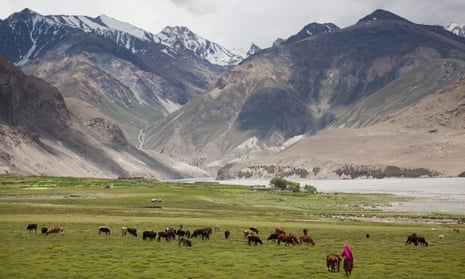Illegal mining of lapis lazuli, the brilliant blue stone once coveted by Egyptian pharaohs, is fuelling the rise of the Taliban in a once famously peaceful corner of Afghanistan, an anti-corruption group has warned.
Fighting between local strongmen for control over the legendary lapis mines in the far north-eastern province of Badakhshan has created conditions for insurgency to flourish, according to a report by Global Witness, a London-based campaign organisation.
Badakhshan, which borders Tajikistan, has seen a sharp decline in security in recent years, with various districts at times overrun by insurgents.

Global Witness said nominally anti-Taliban strongmen who rose to prominence during the anti-Soviet “jihad” of the 1980s had badly undermined security by fighting for control of lapis resources as well as nearby mines that produced tourmaline, a gemstone.
The resulting conflict, which has killed at least 24 people, has opened space for insurgents and helped drive Taliban recruitment in a province that only a few years ago still attracted a smattering of adventurous western tourists to the epic wilderness of the Wakhan Corridor.
The district of Kuran wa Munjan, where the lapis mines are located, was plunged into crisis in 2014 when it was seized from government control by a militia loyal to Haji Abdul Malek, a former commander in the area during the civil war in the 1990s who became chief of police after 2001.
Malek was reasserting his control over an area that had fallen under the sway of Zulmai Mujadidi, another commander-turned-politician from the same Jamiat-e-Islami faction, whose younger brother heads the local Mining Protection Force. Mujadidi, who denies any links with illegally armed groups, served as a senior intelligence official in the government of former president Hamid Karzai in 2001.
Global Witness said the government had “effectively lost control of a large area of what should be among the most secure provinces in the country”.
A bid by Kabul in early 2015 to assert control by imposing an embargo on the mining and transport of lapis had had a limited effect, the report said, with stones continuing to flow into the neighbouring Panjshir valley.
The report said the Afghan state was being starved of much needed revenues from the country’s immense mineral resources, which include emeralds, rubies and vast copper reserves.
The Taliban finds ways of “taxing” almost all forms of economic activity in areas where its fighters are present, most famously the lucrative opium crops of Helmand, but also the timber trade in the eastern forests and marble cutting in the south.

It has also managed to tap into a small but fast-rising share of money from lapis, according to rough estimates by Global Witness, which includes alleged payoffs and protection payments made to the Taliban by Malek and Mujadidi.
The report claimed mining in two areas of Badakhshan earned all armed groups $20m in 2013, with only $1m going to the Taliban; that rose to $4m in 2014, with Global Witness claiming insurgents managed to grab half the proceeds in 2015.
“Taliban forces are poised at the northern edge of the lapis mines, are already receiving a large part of their revenue and there is a very real threat that they could take them over if they wished,” the report said. “In the competition over the mines, they are emerging as the real winners.”
Lapis lazuli has been used in jewellery for millennia, with Afghan stones found in artefacts around the world, including the death mask of Tutankhamun, the ancient Egyptian pharaoh. It was also ground up to make bright blue paints used by Italian Renaissance artists.

Comments (…)
Sign in or create your Guardian account to join the discussion